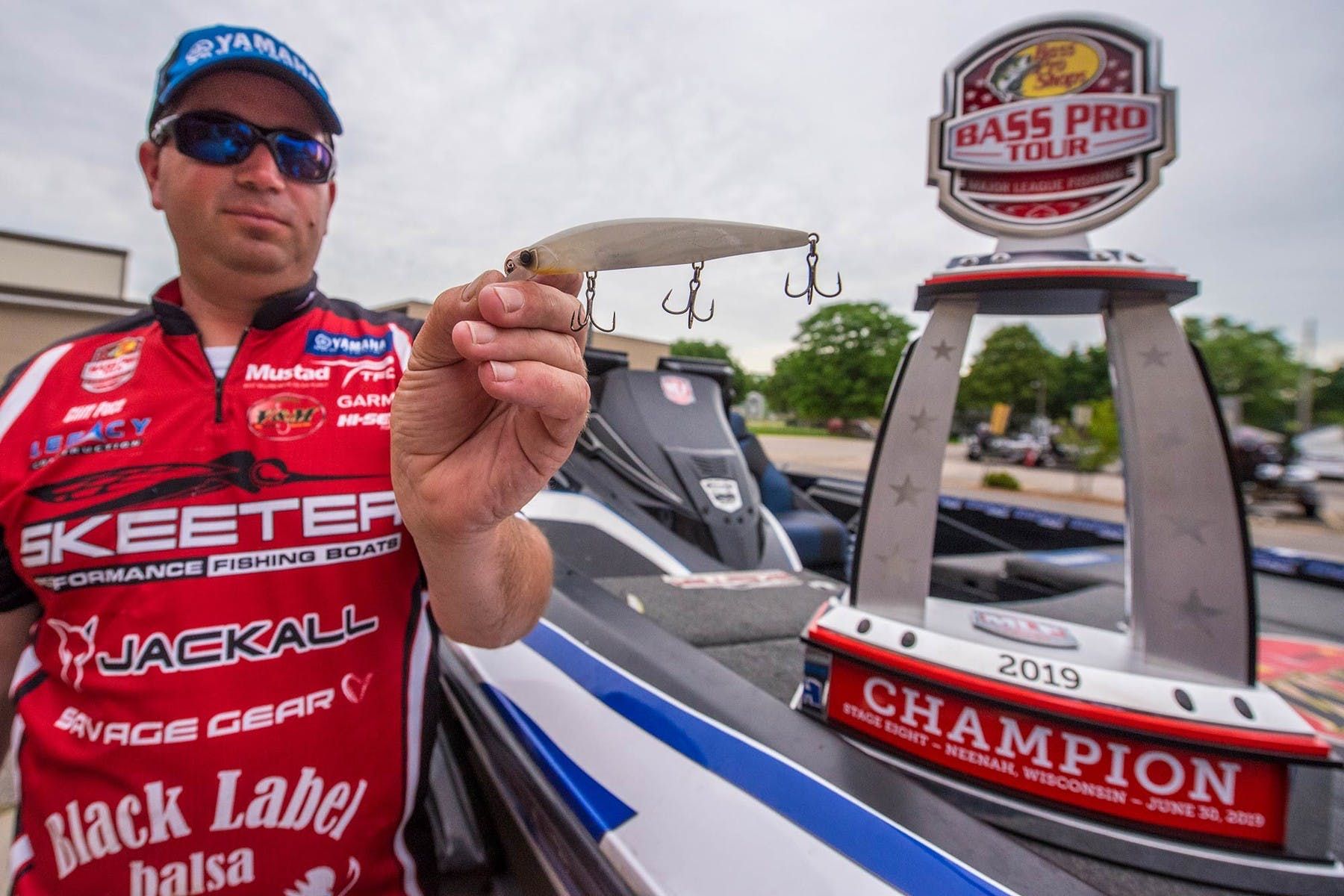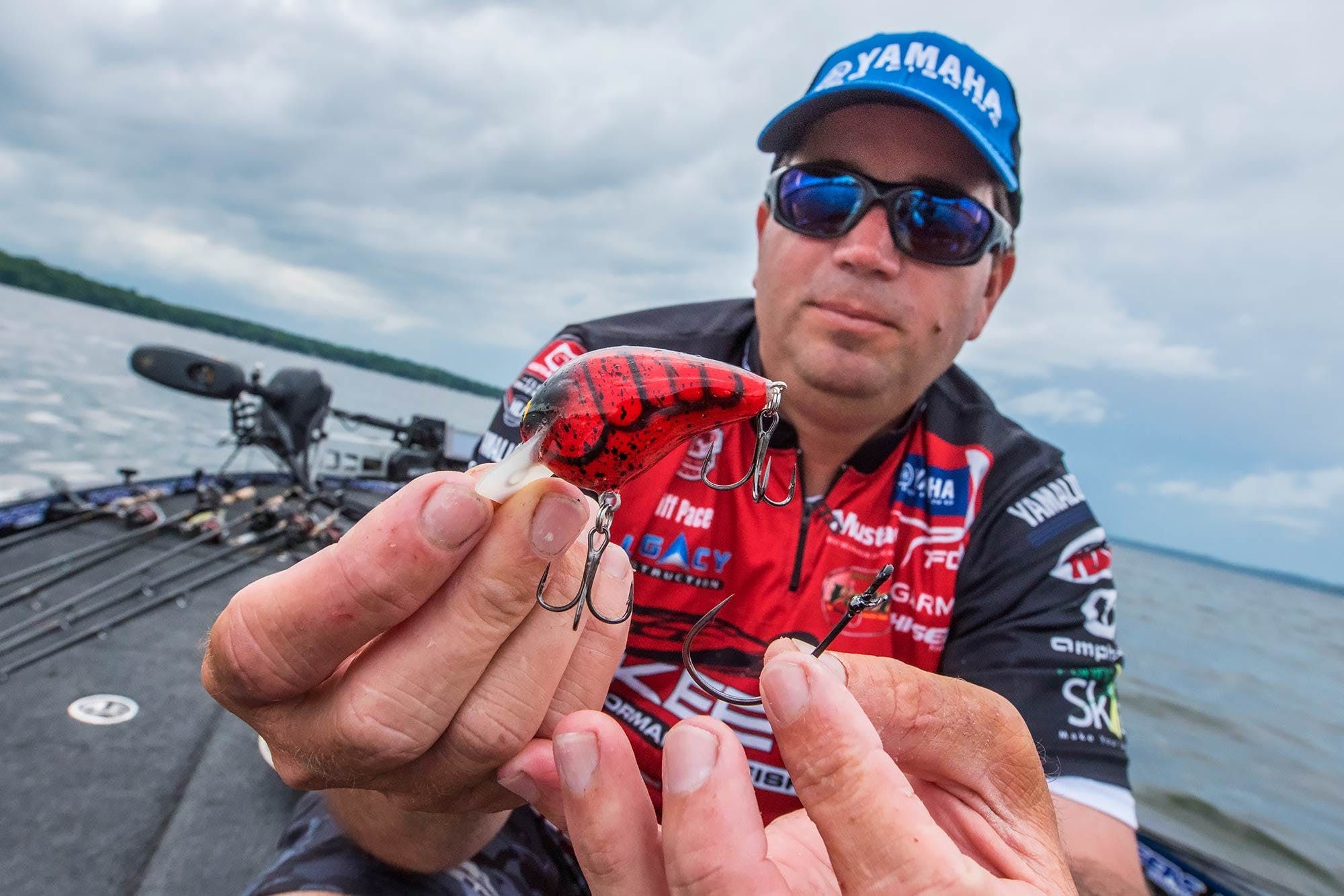Pace Makes His "Point" in BPT Win

The tournament format presented a blend of challenge with opportunity, but when the dust settled, Cliff Pace’s technical prowess guided him to victory at the Major League Fishing Bass Pro Tour Stage 8 event.
Set in Neenah, Wisconsin, the event’s Shotgun and Elimination rounds were held on Lake Winnebego, after which the top-40 moved on to the Knockout Round held on Lake Butte des Morts. From there, the top-10 competed in the Championship Round on Green Lake.
"It was kind of a spread-out venue with several different lakes in play," Pace said. "Different baits, different techniques and different strategies worked on each different body of water."
Amid this diversity, Pace said he found that a mobile strategy and a key tackle adjustment were essential to his success.
How He Did It
Pace’s game plan involved throwing several crankbaits, including a Jackall Aska and the CBS1 balsa bait from his own Black Label line, along with a Jackall Rearrange 110 jerkbait. Knowing that he needed to make a lot of casts, Pace said the moving baits helped him with time management.
"Throughout the week, throwing those reaction baits enabled me to cover more water and get in front of more fresh fish," Pace said.
"We were going to new water each day, so your stuff wasn’t getting as beaten up (as it would in a single-lake event). I could fish aggressively and get more reaction bites and put more fish on the scales."
Treble Tactics
Pace changed his baits’ stock hooks to Mustad TG-76 Triple Grip Ultrapoint trebles. These short-shank 1X strong hooks, he said, effectively addressed a dilemma common to treble hook baits.
"A lot of treble hooks are very sharp, but they’re not very strong; they want to flex out and bend," Pace said. "That hook is a combination of both — it’s a power-fisherman’s treble hook. When that hook goes in, it stays there."
"Smallmouth are notoriously hard to land, especially on treble hook lures. They’re very active, they jump a lot and they’re very aggressive. A lot of times those fish will jump three or four times. Having a treble hook with such a high landing percentage, like that TG-76, enables me to capitalize on more of my bites and, at the end of the day, that equates to more weight on the scale."
The specific benefit, Pace said, was efficiency. What bit remained hooked and that allowed him to boat flip his fish, rather than burn valuable time trying to grab them at boat side.
"I was cranking on 20-pound line and when one would bite it, I’d have the confidence to wind them in and flip them in the boat. I don’t spend a lot of time chasing them around the boat, trying to play them down and land them."
"Now, granted, I wasn’t catching 5-pound fish; most of them were 2- to 2 1/2-pound fish, but I could be more aggressive with it. At the end of the day, that saves me a lot of time, allows me to cover more water and maintain my boat positioning better."

Size Matters
Pace used size 6 trebles on most of his baits, although he strategically arranged one squarebill with a Size 4 treble in the front and a Size 6 in the back.
"Sometimes, a bait won’t carry two Size 4 trebles without getting tangled, so I’ll use a No. 4 and a No. 6, with the bigger hook in the front," Pace said.
"The bigger hook in the front ensures the bait tracks properly, but also the front hook will be up behind the bill during the retrieve, so you can put a bigger hook on the front and still maintain snag resistance."
"But if you put a big hook on the tail, it’s swinging left and right, so if you go by a stick, it gets hung up."
Effective and efficient, Pace’s plan got the job done.